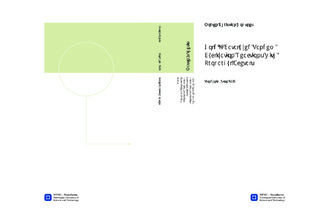Gold(I) Catalyzed Tandem Cyclization Reactions with Propargyl Acetals
Master thesis
Permanent lenke
http://hdl.handle.net/11250/247924Utgivelsesdato
2013Metadata
Vis full innførselSamlinger
- Institutt for kjemi [1397]
Sammendrag
The main goal of this thesis has been to further explore gold(I) catalyzed cyclization reactions including propargyl acetals. Gold(I) catalysts have a strong affinity to triple bonds, and alkyne-gold complexes are readily formed.Both propargyl esters and acetals have previously been investigated in gold(I) catalyzed reactions. These propargylic substrates undergo intramolecular rearrangements to form gold carbenoid intermediates IVa-b, which exhibit strong electrophilic character and are activated for nucleophillic attacks. Propargyl esters have previously proven to undergo gold(I) catalyzed [2+1] cyclization reactions with vinyl esters and amides while propargyl acetals have shown to undergo gold(I) catalyzed [3+2] cyclization reactions with the same substrates. The difference in chemoselectivity is due to the electronic properties of the OR-groups in the gold carbenoid intermediates IVa-b. Propargyl acetals have proven to be more reactive than propargyl esters and thus new reactions including these species were investigated further. Propargyl acetals 5a-c were synthesized in acid catalyzed reactions between propargyl alcohols 3a-c and 1-methoxy-2-propene. Non-commercial propargyl alcohols 3b-c were formed in a Grignard reaction with benzylic aldehydes 1a-b. 1-Phenylprop-1-yne 6 does not exhibit great nucleophilicity, but in the presence of gold(I) activated propargyl acetals, it has shown to readily undergo cyclization reactions. In this thesis, propargyl acetals 5a-d were treated with 1-phenylprop-1-yne 6 in gold(I) catalyzed reactions to readily form different cyclization products 7a-c, 8a-b and 10a-d by new tandem cyclization reactions. Propargyl acetals 5a and 5d provided approximately the same product compositions, respectively products 7a-c and 10b-d, with each fraction yielding 3-12%. Propargyl acetal 5d gave one additional product 10a which was isolated in 7% yield. Product 10a was generated by following a different reaction mechanism than for the formation of 10b-d. The reaction with propargyl acetal 5b was more regio- and stereospecific as it provided one major product 8a in 27% yield. Additionally, another stereoisomer 8b was obtained in 5% yield. Propargyl acetal 5c did not provide any tandem cyclization products, but by following a known [3+2] cycloaddition, product 9 was formed in 15% yield. Possible reaction mechanisms have been proposed for the formation of 7a-c, 8a-b, 10b-d and 10a respectively. All products 7-10 were characterized by 1D and 2D NMR experiments, IR and MS. NOESY experiments were of great importance when distinguishing diastereomers.
